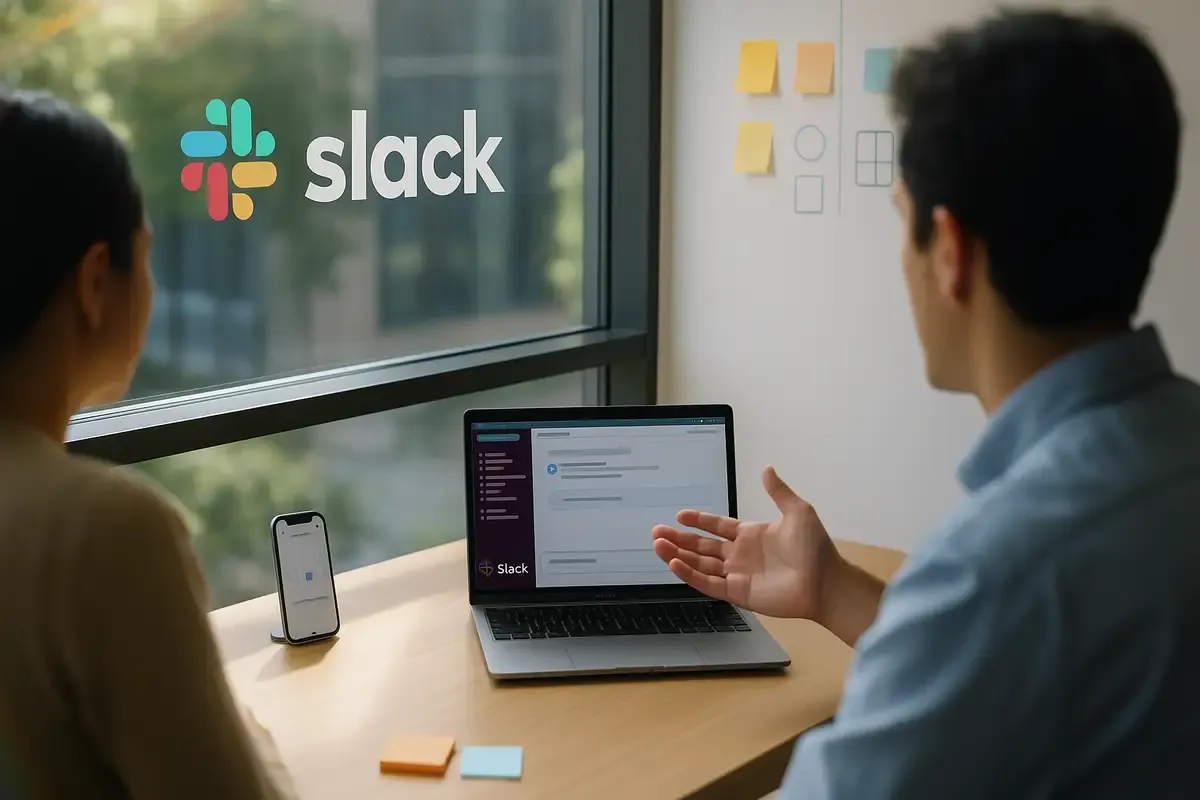Slackbot was reminders. Now it orchestrates everything.
Slack is calling its current Slackbot “fairly rudimentary” and replacing it with an AI assistant that drafts content, organizes launches, and books meetings by checking colleagues’ calendars. The new Slackbot sits beside the search bar—a placement that signals replacement, not supplement. It’s already in use by 70,000 Salesforce employees, enters pilot with customers now, and is slated for broad availability by year-end.
What’s actually new
Old Slackbot waited for keywords and returned canned answers. The rebuilt version understands requests like “Find the document Jay shared in our last meeting” without exact filenames or tags. It pulls from conversations, files, and connected tools—Google Drive, OneDrive, Outlook—to answer “What are my priorities today?” or assemble a brief.
This isn’t a feature pack. It’s a ground-up rewrite.
The Breakdown
• Slackbot rebuilt from scratch as AI orchestrator, running for 70,000 Salesforce employees now, customer pilot active, broad rollout by year-end
• Claude and Perplexity agents live in Slack Marketplace today; real-time search API and integration protocol in closed beta until early 2026
• New Slackbot sits next to search bar, understands natural language instead of keywords, pulls from conversations and connected tools like Drive and Outlook
• Companies control opt-out, individuals can't disable it; privacy runs through AWS virtual private cloud with no data leaving firewall or training models
Slack also says companies can opt out of the AI Slackbot, though individuals cannot disable it themselves. That explains where control sits: at the admin level. Privacy claims are specific, too: the assistant runs in an AWS virtual private cloud, with no data leaving the firewall and none used to train models. Clear stakes. Clear promises.
Agents move in
Slack’s upgrade arrives alongside a broader platform shift: opening the workspace to AI agents. Claude and Perplexity are already available via the Slack Marketplace. Channel agents—described as “always-on teammates” that answer project questions inside channels—are included with Business+ plans. Updated enterprise search spans apps like Gmail, Dropbox, and Notion on Enterprise+.
Developer plumbing matters here. A real-time search API lets agents query Slack content without bulk exporting or warehousing data elsewhere. A Model Context Protocol (MCP) server standardizes how agents connect, cutting down brittle, one-off integrations. General availability for these tools is planned for early 2026, with a closed beta in the meantime. Patience required.
Rob Seaman, Slack’s chief product officer, frames the goal: every company becomes an “agentic enterprise,” where AI agents work alongside people rather than in separate apps. It’s an ambition measured in workflows, not demos. That’s the real test.
Keywords vs. context
Search is the tell. Keyword search rewards pristine information architecture: consistent names, labels, and channels. Natural-language search rewards how people actually talk: messy threads, shifting names, implicit references. Most work lives in the latter state.
Slack is betting that users would rather ask for what they need in plain English than remember the label they used three weeks ago. That’s a big bet on behavior. And it puts pressure on relevance. Answers must be right, fast, and scoped to permissions. Otherwise people bounce back to Ctrl-F.
The “which assistant?” problem
Slackbot won’t be alone. Claude can draft responses and analyze documents with Slack context. Perplexity grounds answers in Slack conversations. Channel agents hover in shared projects. Agentforce brings specialized helpers for sales, HR, IT, and analytics.
That creates a navigation problem: which assistant should I ask? Slack’s rollout sequencing—pilot first, platform later—buys time to shape norms. For now, the division of labor looks like this: Slackbot for personal coordination, Claude for deeper research and writing, Perplexity for grounded Q&A, Agentforce for function-specific tasks.
Reality will blur. A simple ask—“Help me prep for this meeting”—touches calendars, docs, channels, and outside research. Users won’t care which agent did what if the pack delivers a coherent prep brief. That’s the bar.
Orchestration, not chat
Slack’s roadmap points away from “chat with a bot” toward orchestration. Near-term, it plans to connect Slackbot to web data. Mid-term, Slackbot coordinates other agents. Longer-term, users build agents without code. The interface stays conversational, but the output shifts from answers to actions—create an incident channel, assemble the launch plan, queue the social posts.
🔥
Your competitors read this at breakfast.
Join them. Free daily AI updates.
That shift changes economics. Slack still sells seats, but value migrates to “work done per seat.” Some capabilities are bundled (channel agents with Business+). Others depend on Enterprise+, or on third-party pricing inside Slack’s marketplace. Expect more bundling and more confusion until the tiers settle.
Timelines and risk
There’s execution risk in the timing. The flashy parts—Claude and Perplexity in the marketplace—arrived first. The deeper capabilities—the RTS API and MCP server—remain in closed beta until early 2026. Early partners get to refine; everyone else waits. If rivals ship similar plumbing sooner, Slack will need to show why its approach delivers better control and less friction for IT.
Placement matters, too. Putting Slackbot next to search tells users the expected behavior: ask, don’t hunt. In demos, Slack showed the assistant organizing a product launch Canvas by pulling info across channels, then drafting a social plan in the brand’s tone. Those are orchestration tasks, not search. If they work in the wild—on messy, real data—Slackbot becomes the front door to getting work done.
If they don’t, it’s back to keywords.
Why this matters
- Slack is trying to turn chat into the operating layer for AI agents, shifting from “where work is discussed” to “where work is coordinated and executed.”
- The strategy trades simplicity for power: multiple assistants, new admin controls, and evolving APIs could either supercharge teams or swamp them in choices.
❓ Frequently Asked Questions
Q: How does the new Slackbot differ from just @mentioning Claude in Slack?
A: Slackbot's personalized to your workspace—it knows your priorities, calendar, and files across Google Drive, OneDrive, and Outlook. Claude brings deeper research and document analysis but doesn't track your daily context. Slackbot answers "What's on my plate today?" Claude answers "Analyze this 50-page report." Different jobs, different data access.
Q: What's the Model Context Protocol and why does it matter?
A: It's a standard developed by Anthropic that lets AI agents connect to Slack without custom code for each large language model. Before MCP, developers rebuilt integrations for GPT, Claude, Gemini separately. With MCP, one connection works across models. It hits general availability in early 2026 after closed beta testing.
Q: Will the new Slackbot cost extra on top of my Slack subscription?
A: Channel agents are included with Business+ plans at no extra cost. Enterprise search requires Enterprise+. Third-party agents like Claude and Perplexity set their own pricing through the Slack Marketplace. Slack hasn't announced separate Slackbot pricing yet—it's rolling out to existing subscribers by year-end without mention of add-on fees.
Q: If agents don't train on our data, how do they learn about our company?
A: They don't learn—they search. Each query pulls relevant context from your Slack conversations, files, and connected tools in real time through the search API, then discards it after answering. No data leaves the AWS virtual private cloud. Think of it like a smart librarian who reads documents to answer questions but doesn't memorize them.
Q: Why can't I opt out individually if my company enables the AI Slackbot?
A: Control sits at the workspace admin level, not per user. Admins can disable AI features for the entire organization, but individual employees can't turn them off if enabled. This matches how Slack handles most features—email notifications, search, and channel access all follow workspace-level policies rather than individual preferences.








